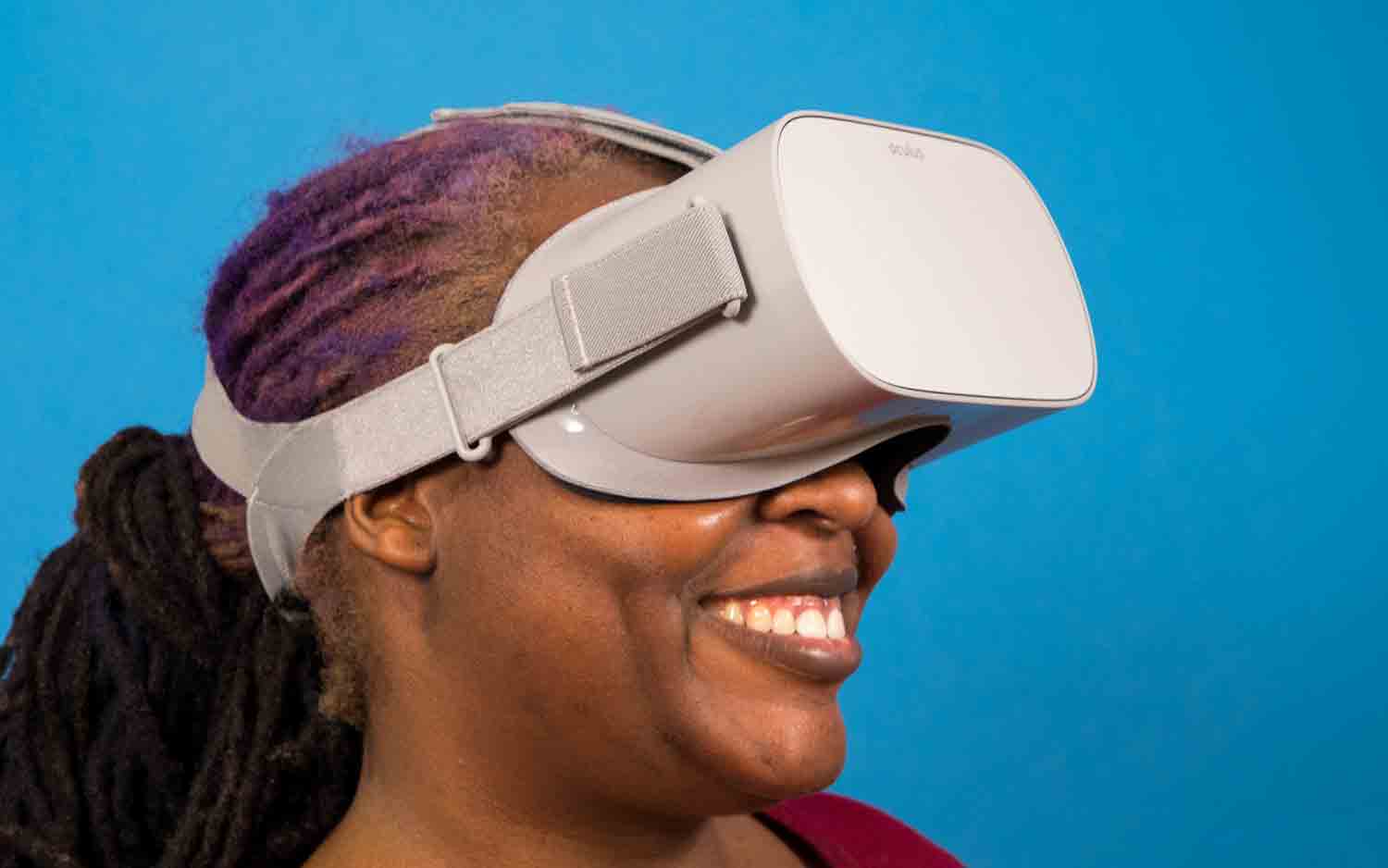Tom's Guide Verdict
The Oculus Go offers a cordless, all-in-one VR for under $200 with a robust catalog of apps and games.
Pros
- +
Completely wireless
- +
Sleek minimalist design
- +
Large library of apps and games
- +
Crisp details and vibrant colors with minimal motion blur
Cons
- -
Some smartphone reliance
- -
Lacks room-tracking capability
Why you can trust Tom's Guide
Look ma, no wires and no phones! Oculus VR is showing the world that the future of virtual reality is indeed wireless with the new Oculus Go.
Starting at $199.99, the Go is an all-in-one VR headset that runs independently of a smartphone or PC, thanks to its Qualcomm Snapdragon 821 processor. By learning from the successes and failures of the Rift, Oculus also added integrated speakers and microphones into the design, along with a stunning high-resolution fast-switch panel that cuts down on motion blur and ramps up the color and detail.
Oculus hasn't overcome the geek factor with this design. But when you pair the above improvements with an ever-growing library of content — which includes some compelling social experiences — the result is a VR headset that's both cost- and space-effective as well as a solid look into the future of the industry. It's also one of the best VR headsets available for mobile use.
Editor's Note: Oculus recently announced that mobile and TV casting will be coming to Oculus Go along with a few other intriguing features. For all the new, click here.
Design
My search for a stylish VR headset continues. The Go is handsome in passing, but not stunning. A quick glance at the device and you could confuse it with Google's Daydream View, thanks to its slate-gray coloring. But while the Daydream View is covered in soft, breathable fabric, most of the Go's frame is made from matte slate-gray plastic. The front plate is made of gray aluminum with Oculus printed on the top in a darker shade of gray.
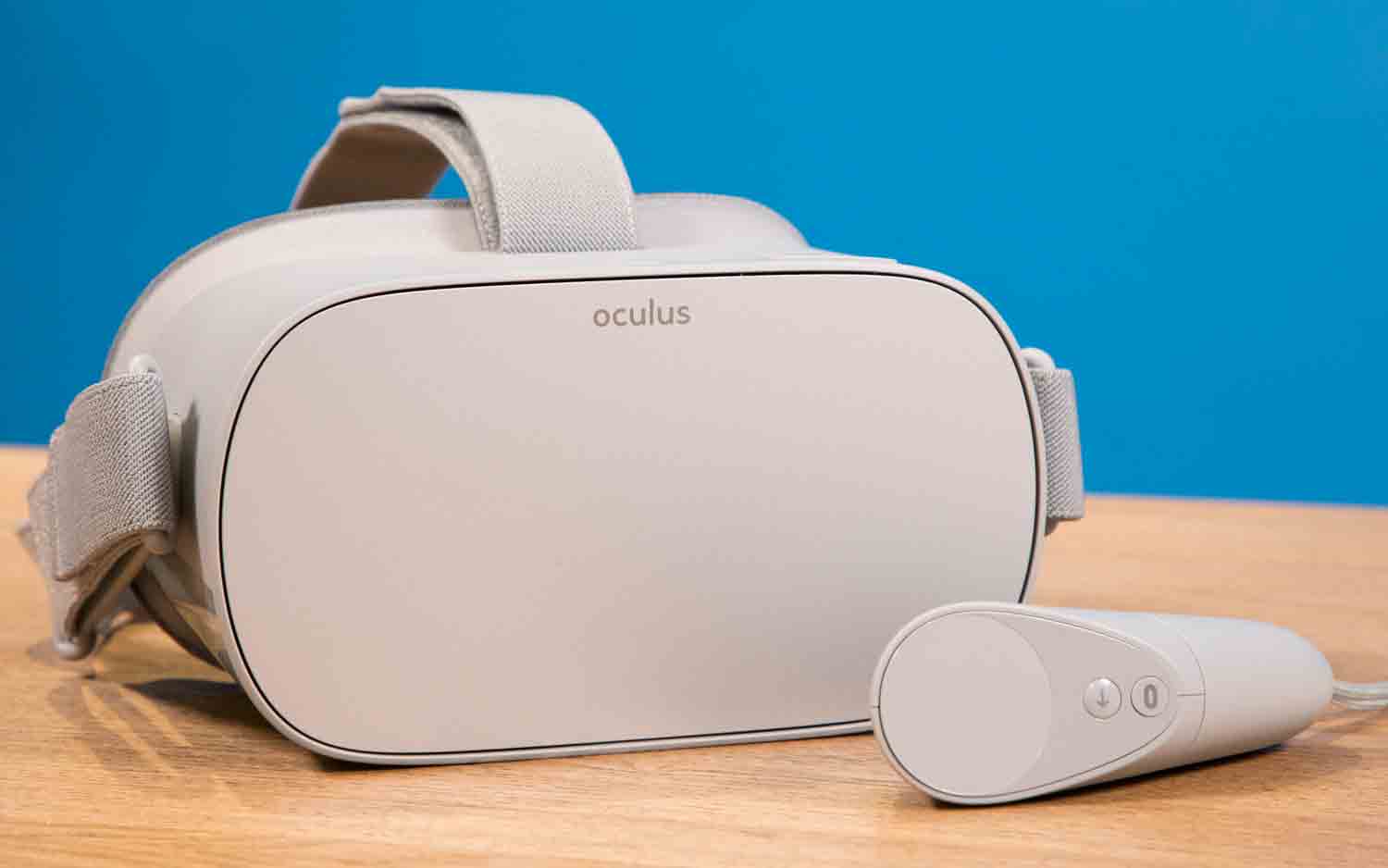
At least the design is comfy. The space that the top half of your face occupies is made of soft foam wrapped in a gray-and-black-knit mesh made of nylon and spandex. And the straps that hold the headset in place are made from soft, wide, stretchy bands — the ends of which are lined in velcro.
Since the Go is meant to be a wireless VR experience, you won't find many ports. In fact, you'll only find a micro USB port and a headphone jack on the left side of the device and a power button and a volume rocker on the top. There’s a long gray strip of plastic on either side of the headset used to loop the head straps through. While I like Oculus' minimal approach, I wish the designers would have added a microSD slot for expanding the headset's storage capabilities.
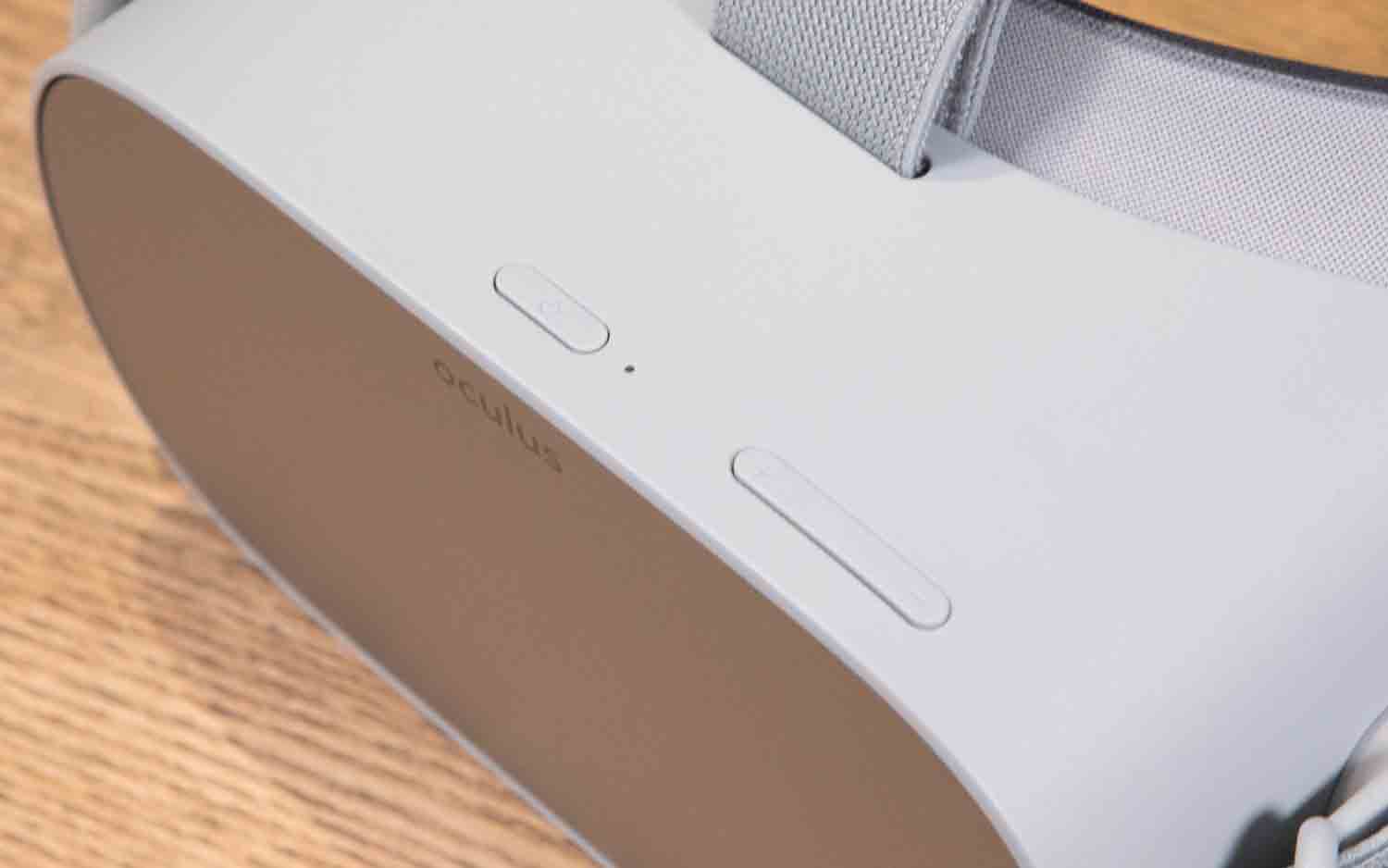
At 16.5 ounces, 7.5 x 4.1 x 4.5 inches, the Oculus Go is fairly light and compact given that all of the guts are built in. Mobile headsets such as the Google Daydream View (6.6 x 4.6 x 3.9 inches) and the Samsung Gear VR (8.2 x 4.8 x 3.9 inches) are lighter at 9.2 and 12.1 ounces, respectively. However, the weights for the latter two don't include the phone you'll need to power your experiences. If you place the 5.8-ounce Samsung Galaxy S9 in the Gear VR, the weight jumps to 15 ounces.
PC-powered head-mounted displays, like the Oculus Rift (16.6 ounces, 7.2 x 4.5 x 3.5 inches) and the HTC Vive (19.9 ounces, 7.5 x 5 x 0.4~5 inches), are predictably heavier than the Oculus Go.
Comfort
Overall, the Oculus Go is pretty comfortable. I wore the headset for 2 hours while wearing glasses without any discomfort. That's thanks in large part to the eyeglass spacer Oculus ships with the Go. All you have to do is pop out the lens rings and facial interface and replace it with the spacer. Once it's secured, put the interface back in and you're ready to go.
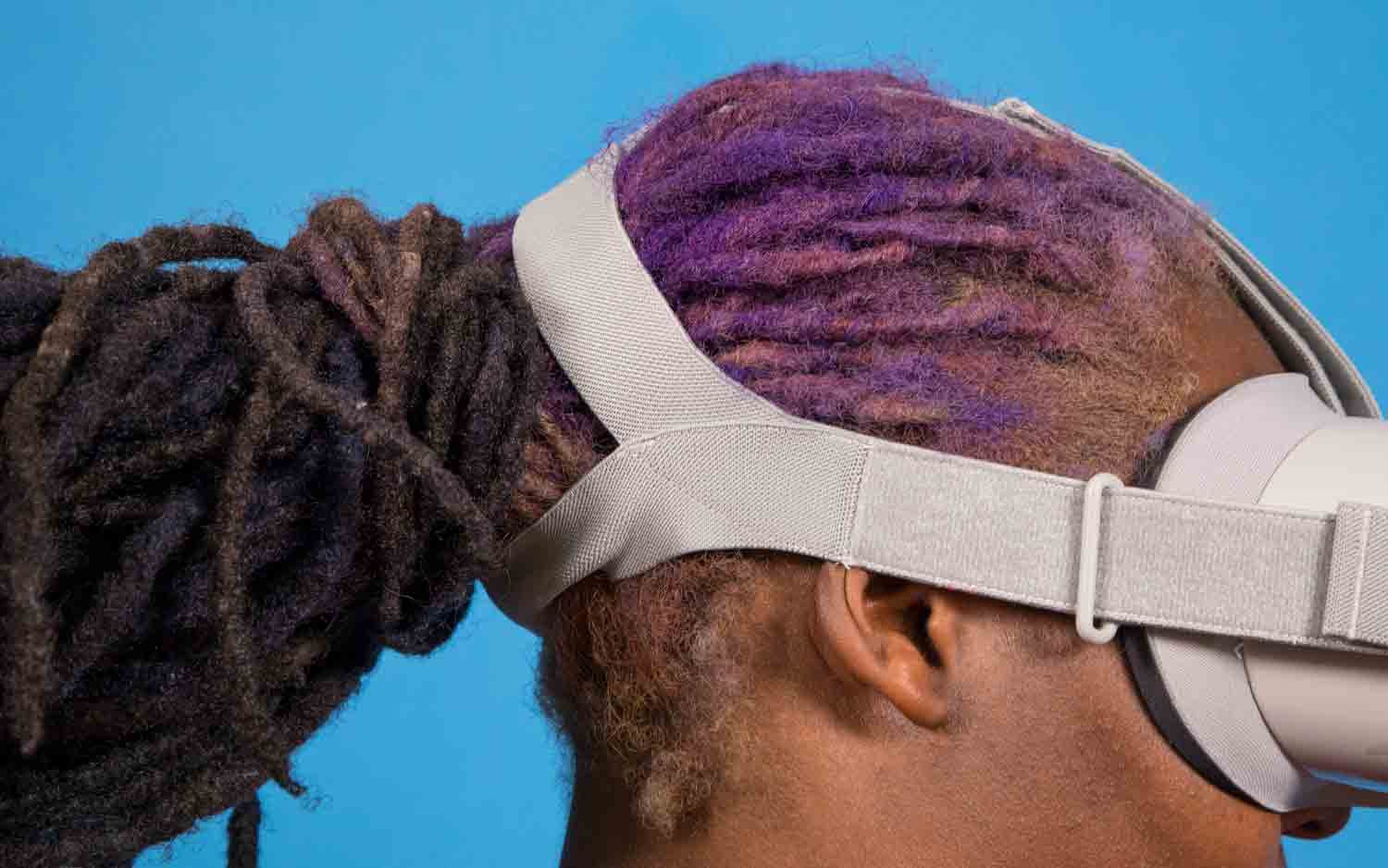
And for those of us with long or big hair, the Go's head straps are stretchy enough to accommodate some of our hairdos. For this review, I had my butt-length locs in a ponytail. It took a little finessing — namely, me threading my ponytail through the back straps — but once everything was positioned correctly, the headset rested snugly on my head without exerting uncomfortable pressure.
Setup
Although the Go is an all-in-one headset, you'll need your smartphone to set it up. After downloading the Oculus App on my Samsung Galaxy Note 8, it took about 5 minutes to set it up. The app guided me through connecting the headset to Wi-Fi and establishing with which hand I planned to use to the controller. It also offered tutorials on how to use Go with glasses or how to attach the bundled lanyard to the controller. And, of course, there's a quick video to give you a rundown of the system, including the recommended age (13 and over) and a reminder that the Go is best used while seated.
You can download new apps and games directly on the headset, receive notifications and adjust certain settings.
From there, it's time to put the Go on to get acquainted with the handheld controller and main menu. Next, you get to choose the Home backdrop, which is what you'll see every time you pay a visit to the home screen. Once this is set, you're free to start exploring. You can download new apps and games directly on the headset, receive notifications and adjust certain settings.
MORE: Best VR Headsets
The only time I had to touch my phone after the initial setup was when I started testing the Go at home and had to put in my Wi-Fi password. Everything else, like your account name and payment preference, was pulled from my Oculus and Facebook accounts.
Specs
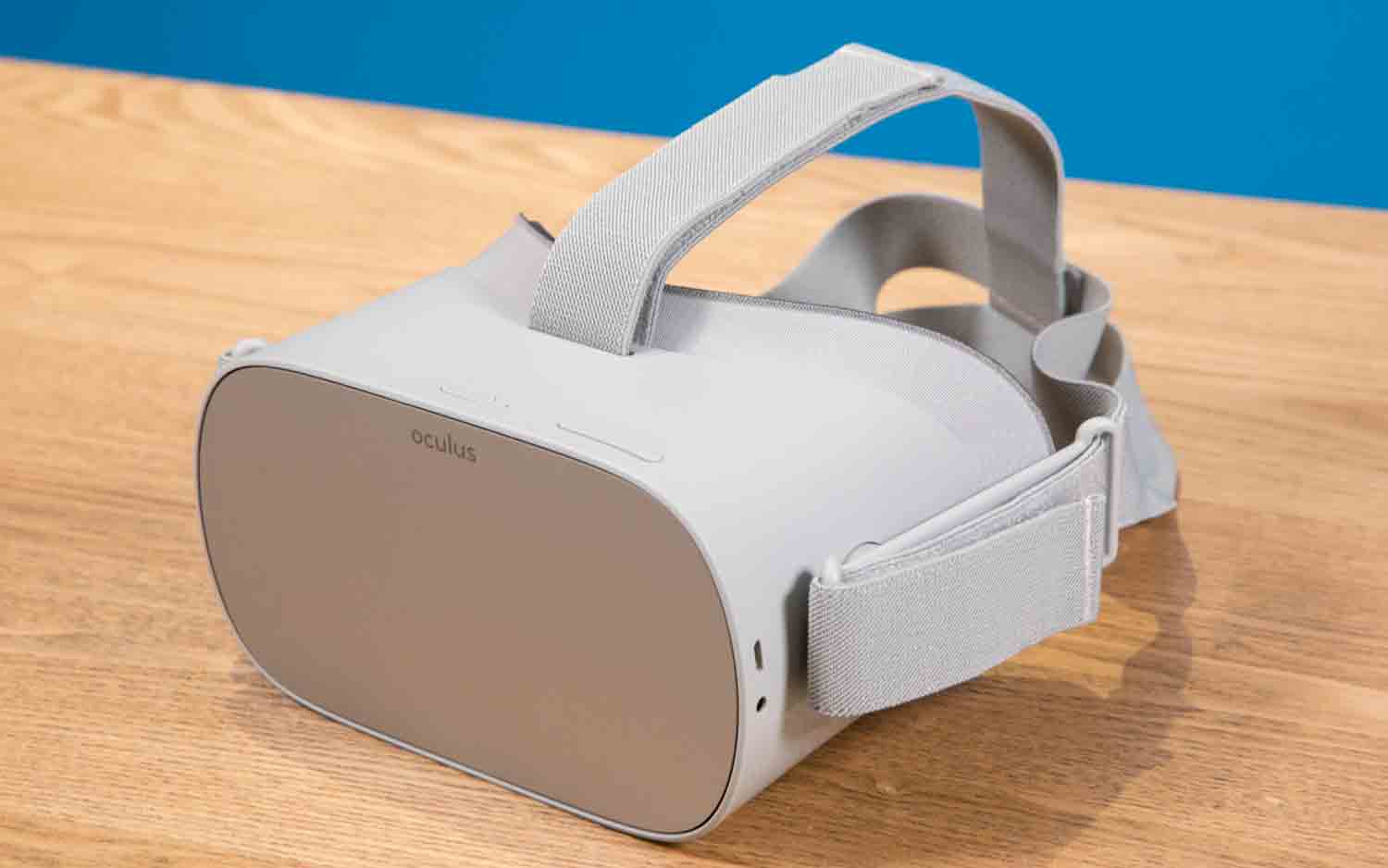
In order to ditch the phones and the wires, Oculus outfitted the Go with a Qualcomm Snapdragon 821 processor with a 5.5-inch, 2560 x 1440 WQHD fast-switch LCD display. That translates into 1280 x 1440 per eye, which is better than the 1080 x 1200 per eye (2160 x 1200) of the Rift and Vive. The fast-switch panel allows pixel color to change faster than your regular LCD panel. That helps cut down on motion blur and motion sickness as you're twirling around in VR. It also improves upon the visual clarity. The screen's refresh rate can vary between 60 and 72 Htz depending on the app or game.
VR Experience
So, how does the Oculus Go measure up to its peers? The Go is a step above mobile headsets like the Daydream View and Gear VR. The individual blades of grass in Guided Meditation VR had more definition on the Oculus Go than on the Gear VR. There's still a bit of a screen-door effect, but it's not as pronounced on the Go as it is on competing headsets. Theoretically, the Go has a better viewing experience than the Rift and Vive due to its higher resolution. However, both PC-powered headsets have higher refresh rates, which plays a part in image quality.
The Go's greatest weakness is what you can't do with it. If you're expecting to go walking around your living room, this is not the headset for you.
In testing, the Go is only a step below the Rift and the Vive. But when it comes to image clarity, the Vive Pro and its super high-resolution displays is at the top of the heap.
However, the Go's greatest weakness is what you can't do with it. If you're expecting to go walking around a living room that's been transformed into a virtual haunted house, this is not the headset for you.
Since Go lacks internal or external sensors to help you keep track of when you're about to walk smack into a door or wall, it's meant to be a sedentary experience. That's not as fun as literally crawling through a VR dungeon as you can with the Vive and Rift, but I still had a blast riding virtual roller coasters and shooting down bogies in space. Just be sure to invest in a chair that can rotate 360 degrees to get the Go's full effect.
Apps and Games
Oculus Go shares a library with the Gear VR, which is why Go can claim a catalog of more than 1,000 games and apps. So you get classics like Bazaar, Eve Gunjack and Keep Talking and Nobody Explodes. However, 100 of those titles are launching specifically with Go in mind, including Claro ($4.99), a puzzle game where you're manipulating the position of the sun in order to grow a tree; Pet Lab (free,) which lets you create and hatch fantastical pets; and Bigscreen VR (free), where you can watch a movie with friends or watch someone get the play of the day in Overwatch.

But since Oculus is a Facebook company, some of the best experiences come from socializing with friends. I built a my own virtual space in the Oculus Rooms app, complete with my pictures from my Facebook albums lining the walls. When I was done, I invited a few of my fellow reviewers to my room to watch a movie on Hulu. Although watching Creed with virtual friends is fun and all, it doesn't really allow for much conversation. So I suggested a couple of rounds of Pairs, a game where you win if you have the most picture matches in 60 seconds. It took only a few matches for the trash talk to begin and feel like I was really playing with friends, especially with their avatars in the room.
Audio
Since the Go is self-contained, it makes sense that Oculus added some integrated speakers and microphones. Audio from the speakers sounded surprisingly clear, allowing me to hear the gentle swish of the wind against the delicate tinkling of the piano that transitioned into a full swell of violins. It's loud enough to drown out the outside world, but not fill my medium-size bedroom. However, since there are no earphones on the Go like you'd find on the Rift, there is a significant amount of sound bleed, as my boyfriend could hear everything when I sat next to him on the couch.
MORE: Coolest Oculus Rift Games (So Far)
The built-in speakers are at their best when you're playing a horror or a shooter, because you can really appreciate the 3D spatial audio. It was a bit unnerving exploring the Neibolt house in the IT: Escape from Pennywise VR. As I made my way through the Very, Very Scary Door, I could hear every creak as I progressed down the hall as well as high-pitched childish laughter and Pennywise's threatening growl seemingly right behind me, which made me spin around — only to discover that the killer clown/cosmic entity was right in front of me.
The built-in speakers are at their best when you're playing a horror or shooter, because you can really appreciate the 3D spatial audio.
Negotiating a trade in Catan VR was simple as saying, "Hey, can you spare a couple of ore for some wool?" The mics delivered crisp, clean audio with no nasty feedback, allowing me to get the resources I needed to build yet another city.
Controller
VR controllers come in a number of shapes, sizes and futuristic designs. However, a couple of components can be found in most: a directional touchpad, buttons for Home and Back and at least one trigger. On this 2.3-ounce, 4.4 x 1.5 x 2.2-inch, matte plastic slate-gray controller, you'll find the touchpad at the top of the controller with the Home and Back button directly beneath. A lone shiny plastic trigger sits at the rear, curved just right to hug my index finger.
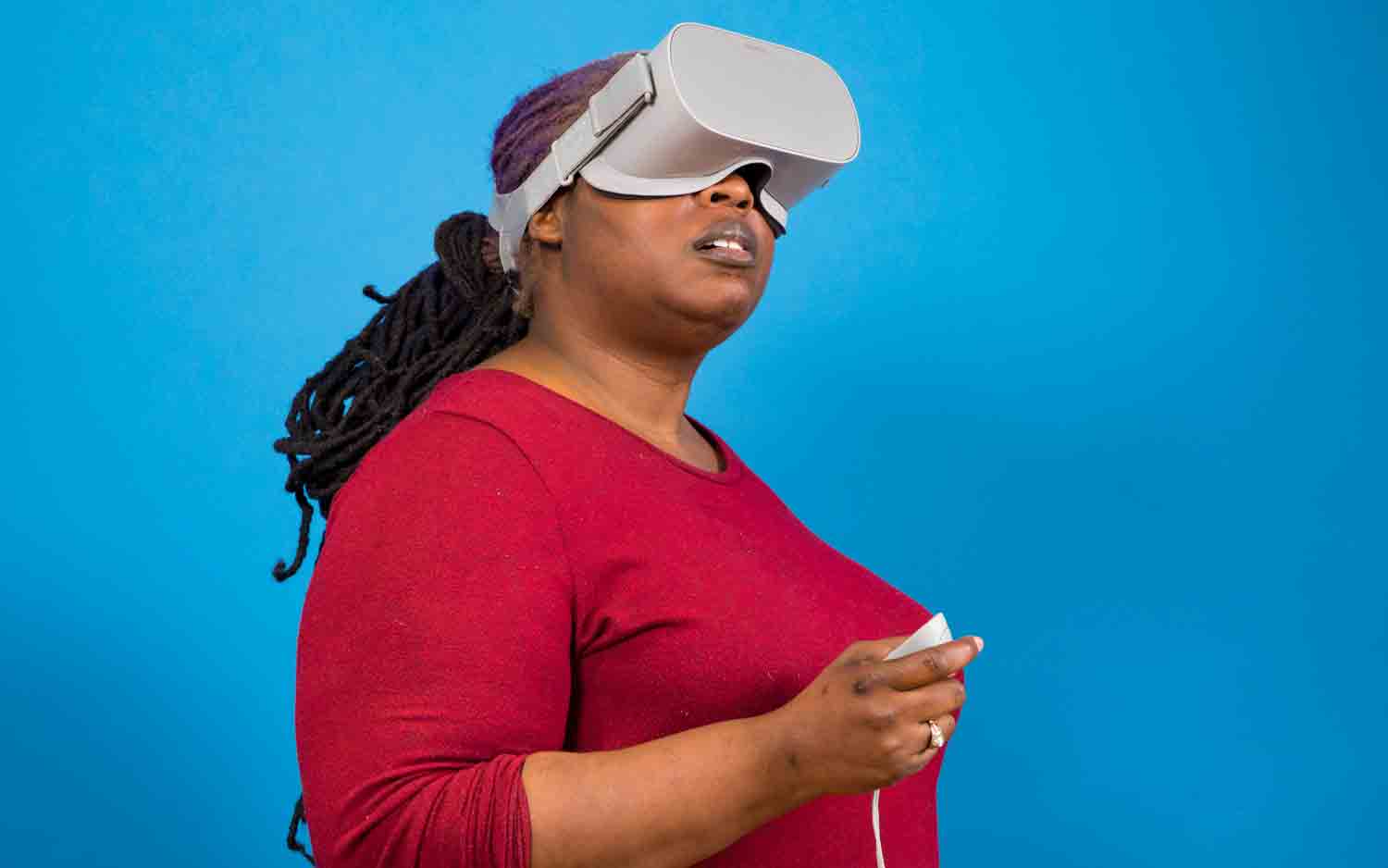
Oculus splits the difference between the simplicity of the Rift's flat controller and the ergonomic shape of the Touch controllers. The result is an oblong gray cylinder that fits comfortably in my hand, gently encouraging a slight curvature in my fingers. The bend along the back of the peripheral rests lightly on my middle finger, while thumb rests on the touchpad and my index finger grips the trigger.
My only real gripe with the Go controller is that it requires a AA battery instead of using a micro USB port to charge.
Interface
Outside of the fancy customizable home screen, Oculus Go's interface is pretty similar to the interfaces of the Rift and the Gear VR. It's a tile-based system with big tiles for Recent, Upcoming Events, Action and Adventure, Travel and Nature, Trending, Horror, Sports, Following on Facebook and Entertainment: Music, Movies.
Sitting directly below the tiles is a dark gray control panel that bares a large resemblance to an Android notifications shade. It's there you'll find tabs for Navigation, People, Sharing, Notifications and Settings along with the time, Wi-Fi signal and battery life for the controller and headset. Farther down are icons for Home, Library, Store, Browser, Gallery and Search.
MORE: Oculus Rift vs. HTC Vive: The Vive Is a Better Buy (for Now)
Above the tiles are tabs that help aggregate games and apps, including Just For You, Discover and Categories. Off to the right sits a Voice Search tab to help you learn some of the commands the feature offers.
Voice Search
Previously in beta, Oculus is ready to take the training wheels off its Voice Search feature. The finished version feature is pretty much the same as the beta, allowing you to search for and launch apps, re-center your view, or cancel out of a program simply by saying, "Hey, Oculus" followed by the command. Voice Searche was pretty responsive, taking about 3 seconds to react to my commands to search for action games as well as specific apps.
Battery Life
Oculus claims that the Go can last up to 2.5 hours depending on the activity. For example, the company estimates the headset will last 2 hours when playing a game. When I took the Go for a spin, I played Republique VR for 1:30 before the low-battery notification popped up. I managed to get to 1:45 before I called it quits, and then I still had 13 percent battery life left.
After recharging the Go, I binge-watched all 10 15-minute episodes of Aggretskuo on Netflix to start and switched over to Marvel's Runaways. I made it through 40 minutes of the first episode when I saw the low-battery notification, but managed to make it until the end of the episode with 8 percent battery life to spare.
Oculus Go Cost
Oculus Go comes in two flavors. There's the $199.99 version, which features 32GB of storage, and the $249 iteration, which doubles the storage to 64GB.
Bottom Line
Think of Oculus Go as Rift 1.5. At its core, the Go is a stopgap measure as we wait for Oculus to launch Project Santa Cruz, which combines the cordless all-in-one goodness of the Go with the positional tracking and room-scale abilities of the Rift. For $199.99, the Go cuts the cord and preserves your smartphone's battery life, delivering a VR headset teeming with intriguing apps, and games punctuated by clear detail, lovely color and immersive spatial audio.
It's a bit on the heavy side for a mobile headset, but my bigger gripe is that the Go still relies on your smartphone. I mean, you're not going to be looking at your phone every 5 minutes, but for the Go to be a true all-in-one, it shouldn't need any phone assistance. Overall, the Oculus Go is an exciting look into the evolving future of VR that you won't have to pay a high price to experience.
Credit: Shaun Lucas/Tom's Guide
Sherri L. Smith has been cranking out product reviews for Laptopmag.com since 2011. In that time, she's reviewed more than her share of laptops, tablets, smartphones and everything in between. The resident gamer and audio junkie, Sherri was previously a managing editor for Black Web 2.0 and contributed to BET.Com and Popgadget.
